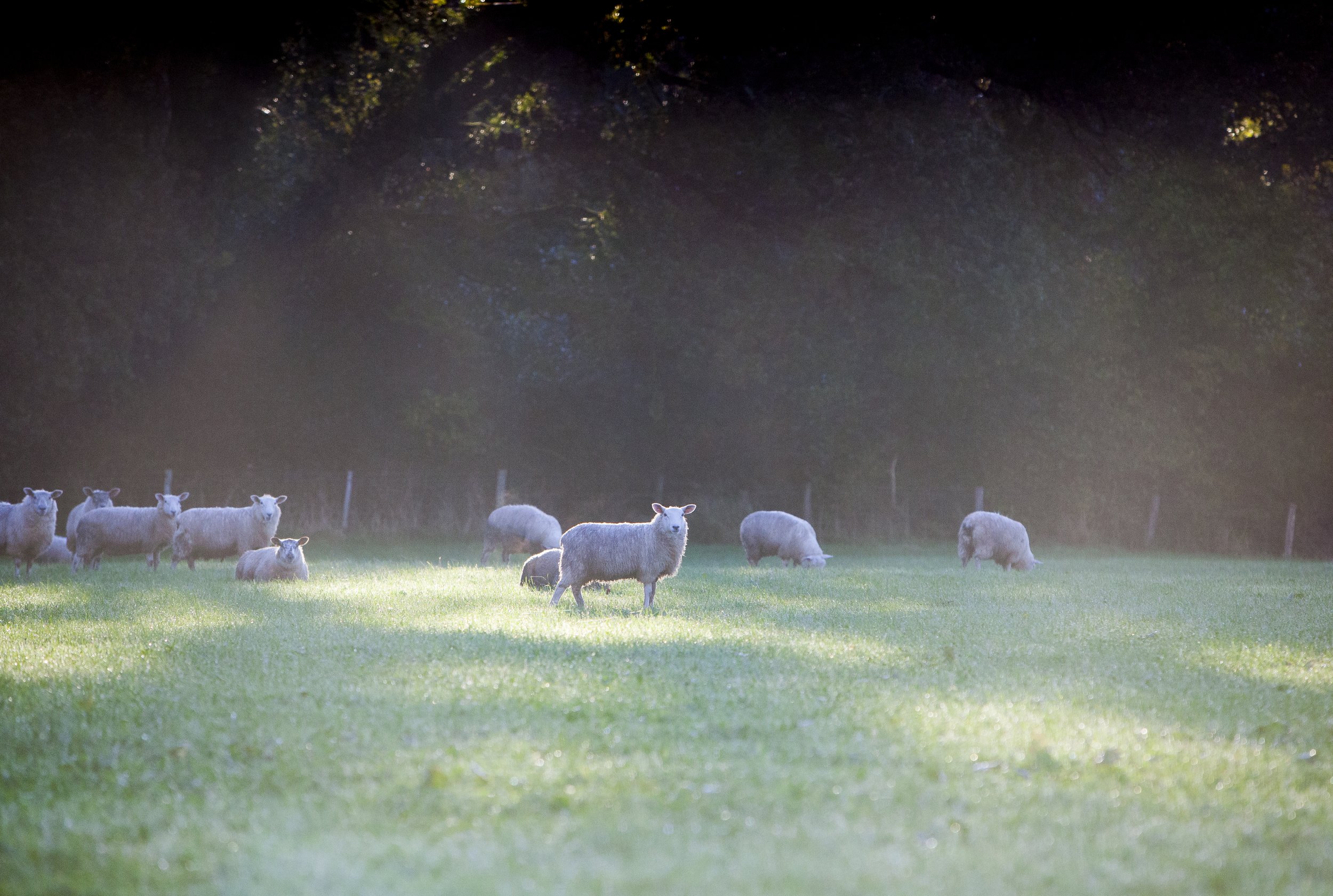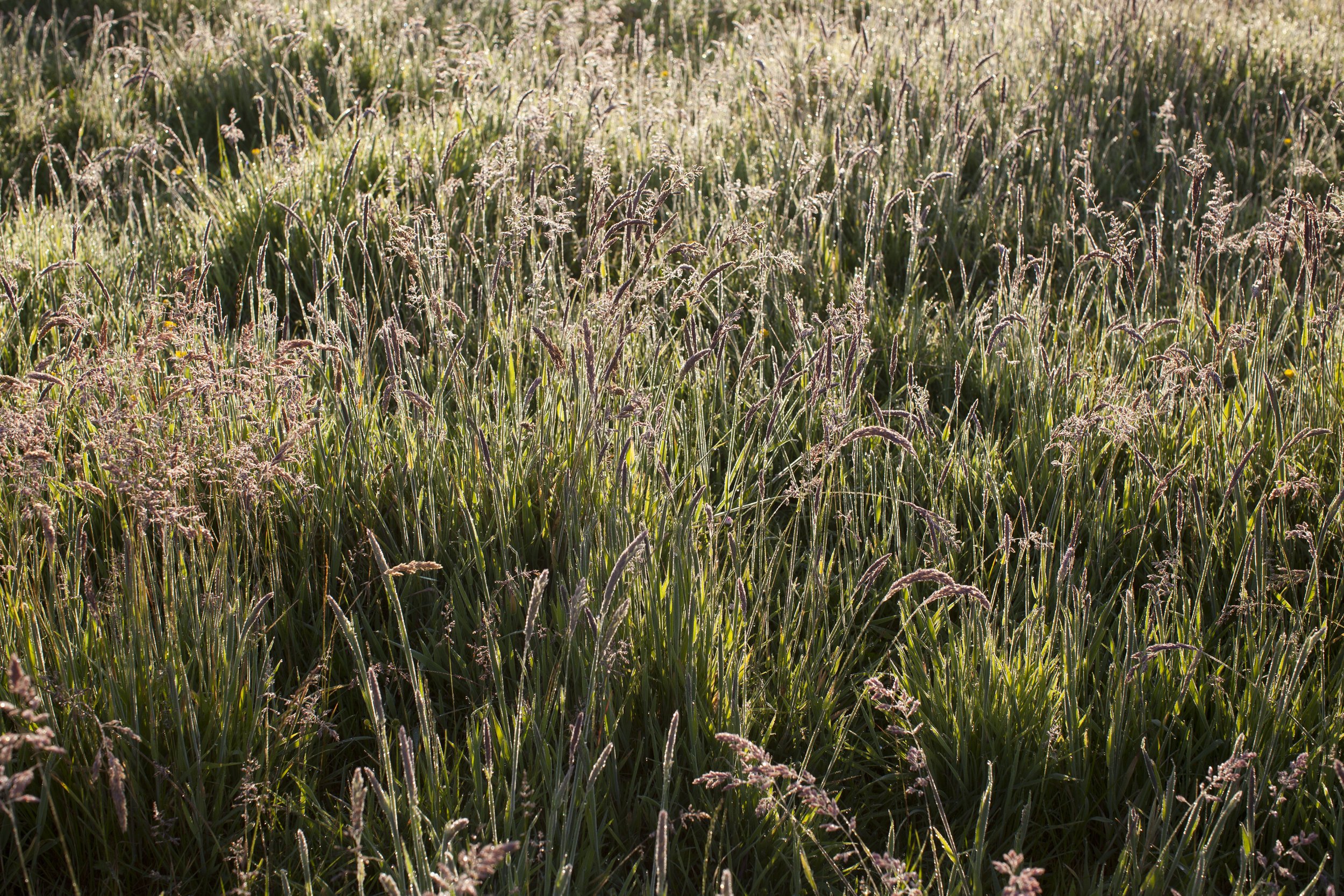
Langford Heath
Milverton Court Farm, at the top of High St, in Milverton, is the hub of everything we do at Langford Heath
We have a herd of Red Devon cows and 40 ewes (mainly Welsh Mules). It is family run business that started when we took over a herd of Devons from Gaye Donaldson in 2009. The ground is familiar to most residents of Milverton and has not been affected by modern farming practise for more than 30 years. In 2014 we added some acres on the edge of Langford Common by Coram’s Wood.
Red Devons are an old, hardy breed that, in the right conditions, require little human intervention and take up to 36 months to get to full size (compared with 18-24 months for some of the modern breeds that bulk up quickly).
Animal welfare, the soil, and reducing C02 emissions are at the heart of what we do. In essence these objectives all go hand in hand because you can’t make progress in one without reciprocal progress in the others. Sadly, this also works in reverse.

Animal welfare
The essence of animal welfare is to allow animals, as far as possible, to indulge their natural instincts. If you are a hen, this means scratching virgin ground to find bugs and worms, it means eating grass, nesting and teaching your chicks all you know. Each animal has its needs and we try to do all we can to make sure these are not suppressed .
We share our ground with a diversity of plant life and a very healthy wild population of small birds, pigeon, woodpeckers, insects, worms, slugs, snails, moles, voles, rats, stoats, field mice, owls, slow worm, grass snakes, rabbits, hedge hog, fox and so forth.
Society puts much focus on how an animal dies and how to sanitise death but almost none on how an animal lives. Very often it is commercial pressure that causes bad practise.
The Soil
England is blessed with natural pastures that need very little in the way of inputs if you spread your muck and you avoid pressuring the soil by over stocking your farm. Low intensity farming, of the sort we practise, also means the herd is less prone to disease and the pharmaceuticals needed to keep disease in check.
We almost never plough up the ground and we keep inputs and sprays to an absolute minimum. We have two sizeable ponds and run-off on our side of the hill is drained into these; reducing the flood water that would otherwise drain into the village. We have planted hedges and copses to encourage bio-diversity and to give our stock the shade and shelter from the wind that they need.
CO2
Livestock farming can be carbon neutral. The key to this is to farm in places that are suitable and to keep the intensity down. Intensive farming only works if you use grain and other fodder crops to fatten the animals and it is this that causes the biggest problem. The soil is a carbon sink and each time we plough it up we release massive amounts of CO2 into the atmosphere. Making matters worse, the machinery used compacts the soil and uses untold quantities of agri-diesel. Shallow till helps but it only works with the intensive use of Glycophates to blanket kill competing ‘weeds’.
There is much talk of livestock releasing methane but this mainly a problem of intensity and systems designed to accelerate the growth of the animal. The level of emissions from low intensity farming, where the growth of the animal is not forced, is more in balance with the natural offsets; the growth of the grass, hedgerows and trees.
